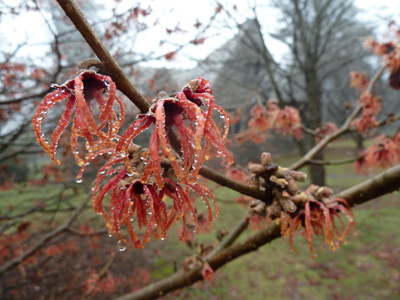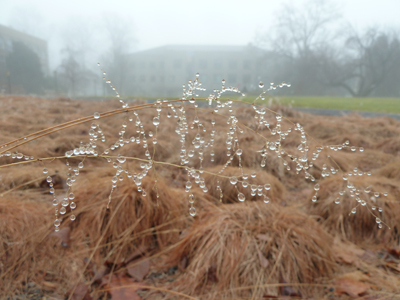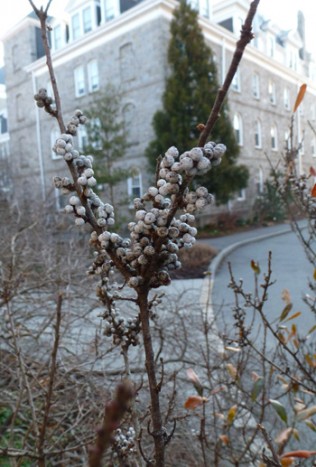Plants of the Week: January 13
 Hamamelis x intermedia ‘Jelena’ is considered by many to be one of the best cultivars to result from crossing Hamamelis mollis and H. japonica. Attributes include vigor, coppery orange flowers, and warm fall color. ‘Jelena’ is consistently one of the first H. x intermedia cultivars to bloom at the Scott Arboretum. The cultivar was named in 1954 by Robert de Belder, a witchhazel enthusiast responsible for naming many cultivars, in honor of his wife. Photo credit: J. Coceano
Hamamelis x intermedia ‘Jelena’ is considered by many to be one of the best cultivars to result from crossing Hamamelis mollis and H. japonica. Attributes include vigor, coppery orange flowers, and warm fall color. ‘Jelena’ is consistently one of the first H. x intermedia cultivars to bloom at the Scott Arboretum. The cultivar was named in 1954 by Robert de Belder, a witchhazel enthusiast responsible for naming many cultivars, in honor of his wife. Photo credit: J. Coceano
Garden location: Foundation planting near fraternity house and Sharples Dining Hall
 Clumps of Sporobolus heterolepis, looking akin to shaggy beached sea urchins, provide a curious and welcome visual change to the winter landscape. The grass is an ideal ground cover for hot, dry areas subject to occasional flooding. The LEED certified Science Center uses infiltration beds planted with Sporobolus heterolepis. Storm water is captured and channeled into beds composed of a 2-foot deep porous planting mix allowing for free drainage and infiltration into the local water table. Photo credit: J. Coceano
Clumps of Sporobolus heterolepis, looking akin to shaggy beached sea urchins, provide a curious and welcome visual change to the winter landscape. The grass is an ideal ground cover for hot, dry areas subject to occasional flooding. The LEED certified Science Center uses infiltration beds planted with Sporobolus heterolepis. Storm water is captured and channeled into beds composed of a 2-foot deep porous planting mix allowing for free drainage and infiltration into the local water table. Photo credit: J. Coceano
Garden location: Science Center infiltration beds
Most people first experience bayberry or Myrica pensylvanica from the bevy of aromatic products – candles, wax, and soap – derived from the waxy covering on the fruits. Found along coastal plains, swamps, thickets, and marshes along the Atlantic shoreline, Myrica pensylvanica is amazingly tolerant of salt and infertile soil. Large colonies form as a result of the shrub’s suckering nature. Plants are dioecious. Male plants bear muted yellow-green flowers while females produce waxy blue-gray fruits. Photo credit: J. Coceano
Garden Location: planting between Parrish Hall and Lang Performing Arts Center






Diane Mattis
Posted at 15:45h, 16 JanuaryBeautiful shots, Josh, especially the first two! I have always
loved Hamamelis.